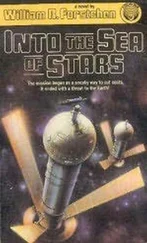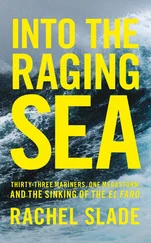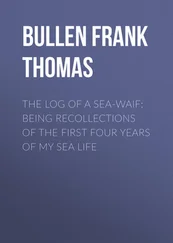1 ...8 9 10 12 13 14 ...18 The two men laughed. When the center of the hurricane passes above you, it’s eerily calm; often, you can see straight up to blue sky. It’s easy to think the hurricane has miraculously cleared up. In truth, the worst is yet to come as the eye wall bears down.
“I think back then,” Jeremie said, “they didn’t know the difference between a storm and a hurricane. They figured a hurricane was just a really bad storm. All those ships that sunk, the Spanish probably said, ‘sunk in bad weather.’ Probably a goddamn hurricane. ”
“No one believed them,” Jack said. “The survivors would talk about hurricanes back in Spain, and people would say, Yeah, yeah. Sure, sure. We know what storms are. No you don’t know what this storm’s like.”
It’s true. The first Spanish explorers in the New World had no frame of reference for such deadly tempests; there aren’t cyclonic storm systems like that in the Mediterranean or along the Spanish coast. The earliest European descriptions of hurricanes emerged a decade after Christopher Columbus’s initial voyage across the Atlantic from the Canary Islands to the Bahamas.
Since arriving in the region in 1492 Columbus had learned about the spiraling storms that came every July through October from the Taíno, the native people of Puerto Rico and surrounding islands. The Taíno called these storms juracánes —acts of a furious eponymous goddess, which they depicted as a disembodied head adorned with two propeller-like wings. She looked remarkably like the hurricane symbol you find on modern maps.
Columbus was sophisticated enough, or frightened enough, to use tools the Taíno had given him to predict the approach of a juracáne as it advanced toward Santo Domingo in the Dominican Republic. He observed cloud formations and the swell of the sea and warned all to secure the city’s main port. His small fleet sheltered in place in a bay while the Spanish governor, dismissing the warning as witchcraft, sent some twenty-six ships laden with gold to their peril.
In their attempt to reconcile the hurricane with biblical or classical references, Spanish chroniclers of the sixteenth century came up empty and called it the devil’s work. But actual mariners had a vested interest in understanding these unprecedented tempests, in spite of the church’s tenacious hold on apparent truth. Juan Escalante de Mendoza, captain general of the New Spain fleet, covered hurricanes and their dangers in his mariner’s guide published in 1575, writes Stuart Schwartz in his book, Sea of Storms: A History of Hurricanes in the Greater Caribbean from Co lumbus to Katrina .
Mendoza called them “a fury of loose contrary wind, like a whirlwind, conceived and gathered between islands and nearby lands and created by great extremes of heat and humidity.”
This account reveals a surprisingly accurate understanding of the storm’s mechanism. Mendoza also noted signs of an imminent hurricane, including odd behaviors among birds, which are exquisitely sensitive to shifts in barometric pressure. When they sense a pressure drop, they might try to outrun it. The result is unusual species showing up in unexpected places, sometimes migrating from America to Europe to escape a hurricane. A few days before a storm, birds might go into a feeding frenzy to bulk up before winds and rains wipe out their feeding grounds. All these behaviors are easily observable.
Schwartz writes that Mendoza was “careful to mention that ‘the things that are to come, you know, sir, only God our Lord knows, and none can know them unless it is revealed by His divine goodness.’ Prediction of the weather always treaded dangerously close to the Church’s disapproval of divination.”
Chapter 5
A Hurricane Is Not a Point on a Map
A hurricane is not a point on a map.
It is not an object that exists in space and time. Rather, it’s a huge catharsis—a brief, explosive event when nature’s forces combine to spin off the ocean’s heat into wind. Over its brief life span, a hurricane expends the power of ten thousand nuclear bombs. It’s a spectacular display of thermodynamics in a complex, evolving, moving system.
Like a cancer, a hurricane is a lethal distortion of the stuff of everyday life. The earth’s winds harmlessly swirl about us, creating patterns in the clouds, kicking up waves for surfers, and nudging planes around the planet. All these heavenly movements are tendrils of much larger systems, like the jet streams that forever flow east, caught up in the rotation of Earth. Thanks to the jet stream, winter storms always pound New England in February when arctic air from Canada drifts south over the plains, gets swept east in its current, and is carried to the warmer air over the Atlantic Ocean.
Although the earth’s meteorological picture is as vast as the planet itself, it is very sensitive, prone to disruption, fickle. A butterfly-wing-like change in pressure or temperature in one place can cause a small piece of the continuum to break away from the mainstream like a recalcitrant teen. It often fades into the ether. But sometimes, when conditions are right, it can escalate exponentially, causing astounding damage to anything in its path.
Perhaps to domesticate these mighty systems, we give them names—Katrina, Sandy, Mitch, Joaquin. We mark them on our maps and say this is where she is . We draw a line and say this is where he will go . As if one day, a storm named Katrina rose out of the Gulf of Mexico like a Japanese monster hell-bent on ravaging New Orleans. As if you could put a beacon on her and track her every move as she made her way to her target. As if there were some kind of motive behind the destruction.
TROPICAL DEPRESSION ELEVEN FORECAST/ADVISORY NUMBER 1: 0300 UTC MON SEP 28 2015: TROPICAL DEPRESSION CENTER LOCATED NEAR 27.5N 68.7W AT 28/0300Z. PRESENT MOVEMENT TOWARD THE NORTHWEST AT 2 KT. MAX SUSTAINED WINDS 30 KT WITH GUSTS TO 40 KT.
Every hurricane begins as an atmospheric low, or depression, in the bottom layer of the earth’s atmosphere—the troposphere—which reaches up to seven miles above the planet’s surface. The low acts like a vacuum, pulling up warm, moist air from the ocean, which spirals around it in a counterclockwise direction in the Northern Hemisphere. If conditions are right—plentiful warm, humid air—the currents corkscrew upward around the low pressure zone at increasing speeds. When that heated air hits the much cooler upper atmosphere, it condenses, shooting out of the hurricane’s top like a whale’s spout, away from the center, and falls to earth as rain.
Feeding on the temperature and humidity differential between the hot ocean and the chilly upper atmosphere, the tropical storm thrives. Air currents around the center pick up heat, and with it, speed, as the center’s pressure drops even lower, intensifying the cycle. “Warmest climes but nurse the cruellest fangs,” wrote Herman Melville.
Joaquin was born as a tropical depression off the Canary Islands, three thousand miles east of Puerto Rico, a birthplace strange and rare for tropical cyclones because it was so far north. Designated Tropical Depression Eleven, it remained a loose cluster of showers that meandered across the North Atlantic toward the Caribbean. Forecasters at the National Hurricane Center in Miami ran their computer models and concluded that the system would dissipate. Over the course of a few weeks that September, however, Eleven defied the odds to become a cohesive system.
Even as Joaquin matured, dozens of computer models at the NHC in Miami predicted its demise. Some didn’t, but they were dismissed as outliers. On Monday, September 28, the day before El Faro departed from Jacksonville, the NHC issued an advisory: “The forecast for T.D. Eleven is to maintain tropical depression status while drifting slowly NW and will likely dissipate by the end of the week due to unfavorable winds aloft.” When Joaquin failed to comply, it took NHC forecasters by surprise.
Читать дальше












